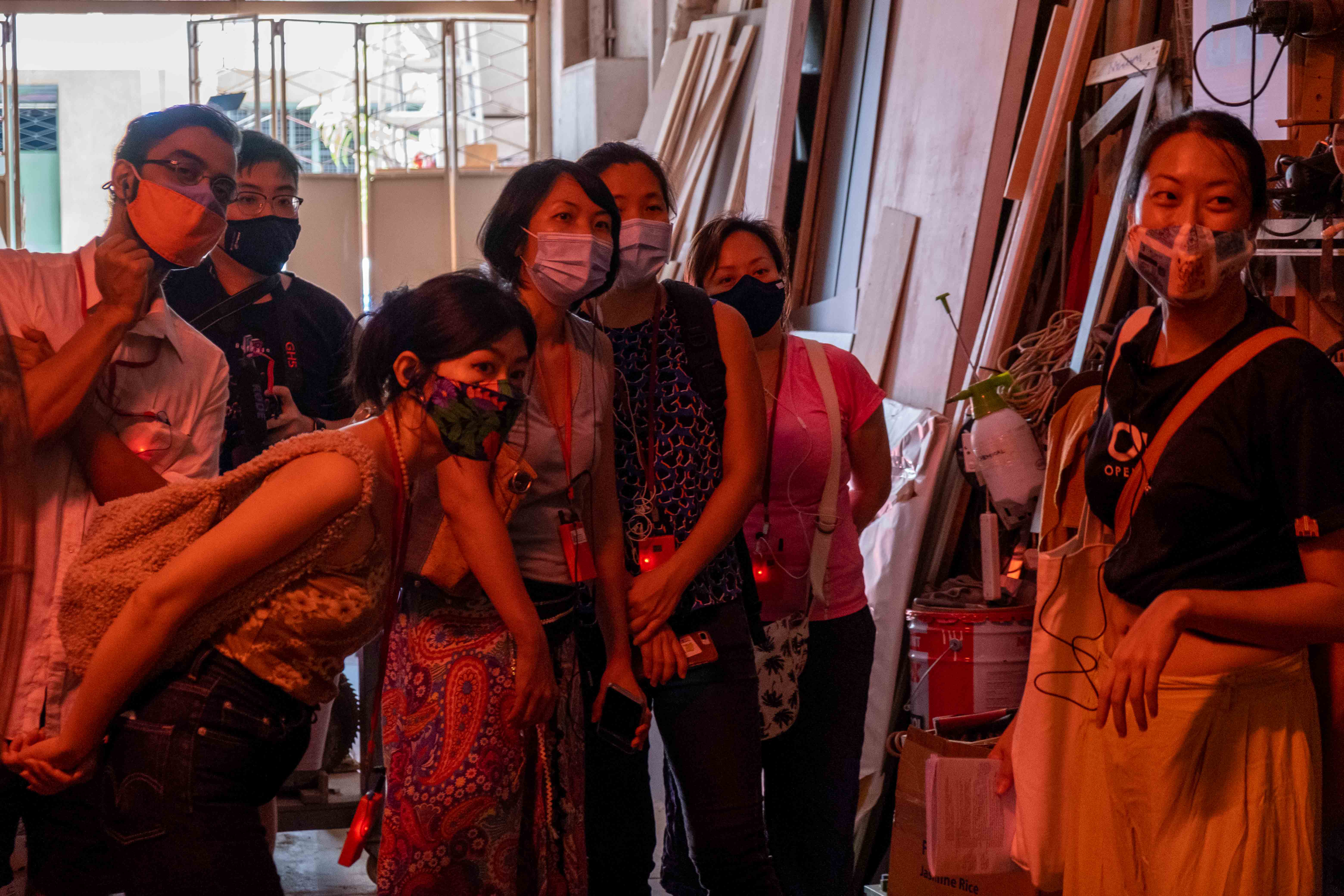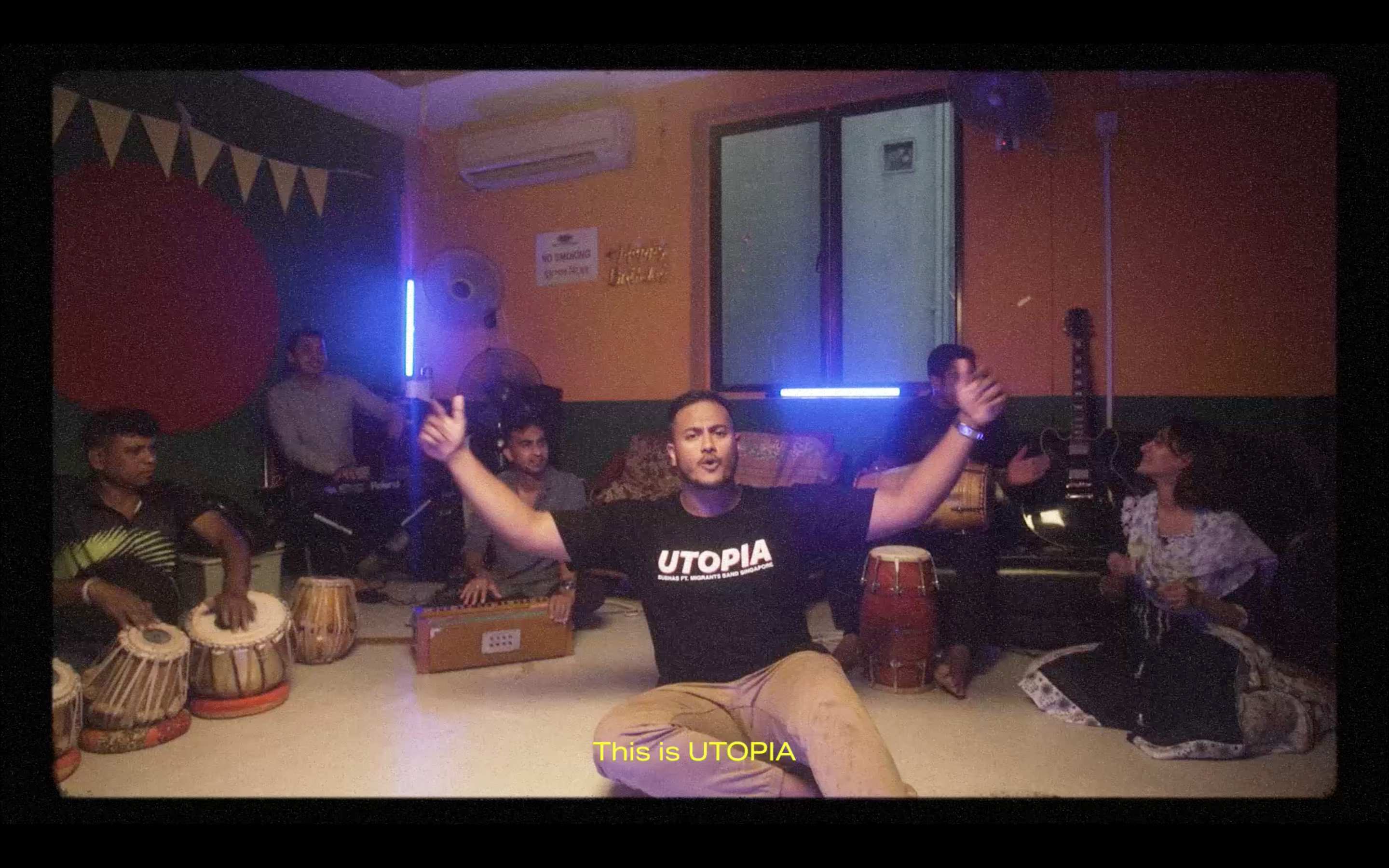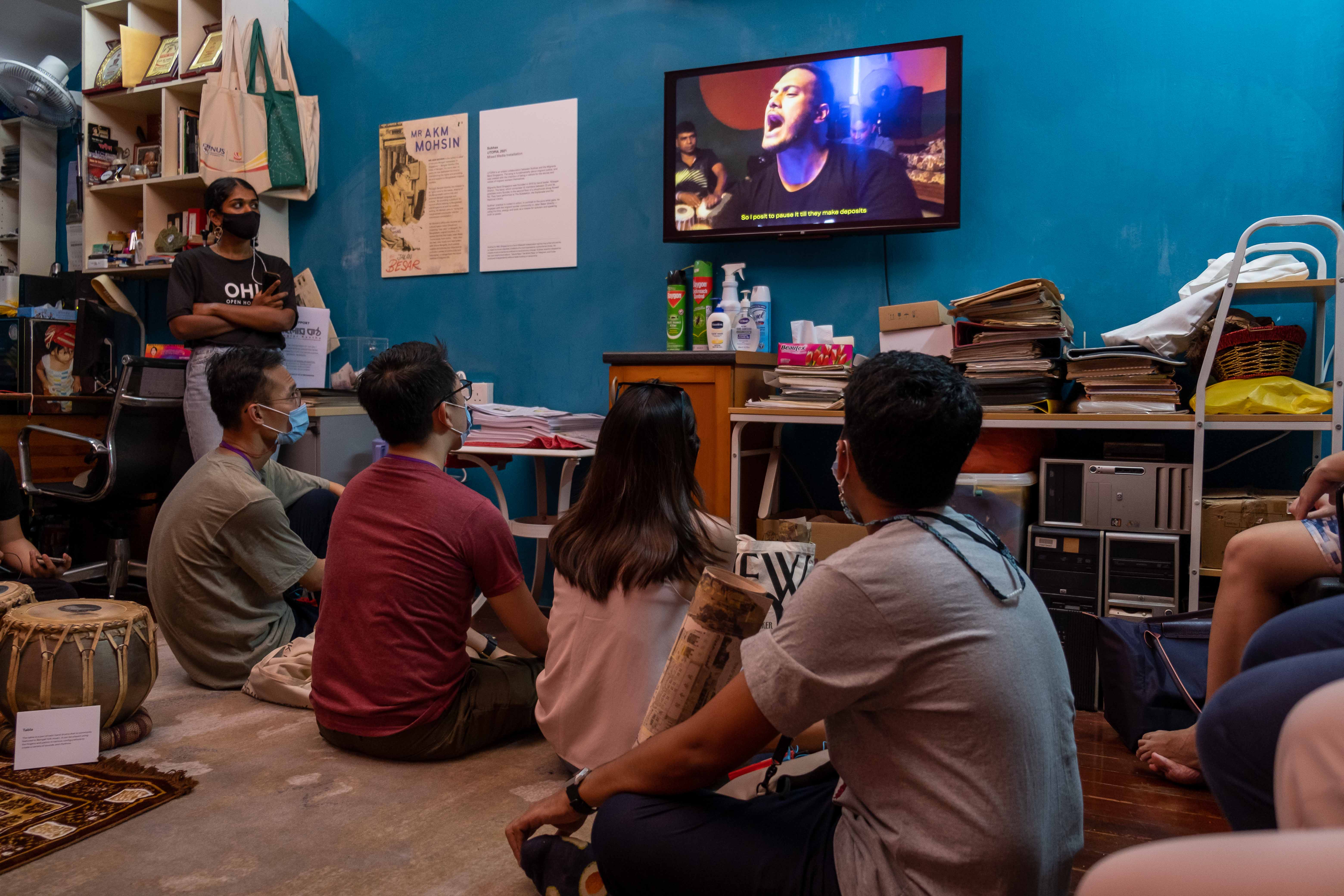OH! Jalan Besar
Scattered across secret spaces in Jalan Besar are the works of 4 artists. We enter Jalan Besar as outsiders, and understand this refuge for strangers: a space for the transient workers, the fringes of society, the sunset trades and disappearing clans.
![]()
![]()
![]()
![]()
![]()
Goliath, 2014





Goliath is a stop-motion film of an artist painting artists painting their self portraits. The figure in the film morphs from Carravagio’s self portrait in David with the Head of Goliath to Velázquez’ self-portrait in Las Meninas before Oei reveals his hand.
Paintings are constructions of reality, representations that lend order to messy, complex events. In Goliath, Oei uses the artist's self-portrait and its complex interrelations of the artists' hand, the gaze and the subject (in this case, you and me), as a way of turning our encounter of Jalan Besar back unto ourselves. What are some of the preconceived notions or biases that cloud our gaze when we walk through this neighbourhood? How have different hands imposed different representations of Jalan Besar into the national imagination?
The work is presented in a 34-year-old carpentry shop founded by Mr Phua (or lovingly known as Jackie Chan of Jalan Besar). Behind the artwork is a secret garden hand-built by Mr Phua. He is representative of the last surviving tradesmen in the neighbourhood.
Paintings are constructions of reality, representations that lend order to messy, complex events. In Goliath, Oei uses the artist's self-portrait and its complex interrelations of the artists' hand, the gaze and the subject (in this case, you and me), as a way of turning our encounter of Jalan Besar back unto ourselves. What are some of the preconceived notions or biases that cloud our gaze when we walk through this neighbourhood? How have different hands imposed different representations of Jalan Besar into the national imagination?
The work is presented in a 34-year-old carpentry shop founded by Mr Phua (or lovingly known as Jackie Chan of Jalan Besar). Behind the artwork is a secret garden hand-built by Mr Phua. He is representative of the last surviving tradesmen in the neighbourhood.
Artist:
Alan Oei
Alan Oei
![]()
![]()
No Strings Attached, 2021 and Grey Clouds at the Beach, But I Don't Want to Leave (Series), 2021


In both works, Nature Shankar uses repurposed fabrics and objects of personal significance to create works that are not only a documentation of personal experiences but an object of resistance.
Shankar’s practice is rooted in the use of materiality to investigate her identity and place in Singapore as a mixed-raced individual. Fabrics are torn apart and put together before being assembled and reassembled in a meditivate, movement-driven and intentional process. This simultaneous destruction and creation parallels the unlearning of internalised racism and construction of identity on her own terms.
Shankar’s work extends beyond the personal gaze to engage with the social gaze — how do we understand the Other? Have we attempted to force-fit the complex into simpler categories? Jalan Besar has been romanticised as a “nostalgic slice of Old Singapore”. At the same time, it is a “dirty red light district” and “the grittier cousin of Tiong Bahru”. Like Shankar, this neighbourhood has had to create an identity for itself on its own terms, separate from the labels imposed on it by others.
Artist:
Nature Shankar
![]()
![]()
![]()
![]()
UTOPIA, 2021




UTOPIA is fundamentally about migrant justice, and was created with the intention of being a vehicle for the stories and voices of migrant workers themselves. Subhas’ practice is rooted in action. In contrast to the pure artist gaze, he engages with the migrant worker community in Jalan Besar directly — using his time, energy and body as a means for activism and speaking truth to power.
The installation was presented at Dibashram, which translates to "daycare" in Bengali. Before the pandemic, this was a social space where migrant workers gathered to jam, write poetry and get-together. These spaces are important and provide opportunities for the migrant worker community to socialise and enjoy recreational activities beyond the dormitories.
Dibashram also doubles up as the office of Mr Mohsin, the editor of Singapore's only Bengali newspaper, Banglar Kantha (The Voice of Bengal). The newspaper covers current affairs in Bangladesh and Singapore, and also has a creative writing platform for short stories and poetry, contributed by migrant workers from all over the world (Singapore, Malaysia, Dubai).
Artist:
Subhas
In collaboration with Migrants Band Singapore
Migrants Band Singapore was founded in 2015 by band leader, Nilsagar Shahin. The band, which comprises 15 members between 23 and 34, practises every Sunday in the second floor of a shophouse along Rowell Rd. They have performed at The Substation, the Esplanade and the National Library.
![]()
![]()
Hampshire Road, 2019


In Hampshire Road, Min-Wei Ting assumes an observational mode of filming to document the scene at the bus depot along Hampshire Road. This bus depot was built in response to the 2013 Little India riots to prevent the spontaneous boarding of buses and trucks.
The realism of Hampshire Road highlights the state’s tight control of the space as well as the heightened levels of surveillance imposed on the migrant worker community. By using a disconnected, detached, almost voyeuristic gaze, Ting creates space for viewers to experience their own organic thoughts and emotions in response to the film.
The realism of Hampshire Road highlights the state’s tight control of the space as well as the heightened levels of surveillance imposed on the migrant worker community. By using a disconnected, detached, almost voyeuristic gaze, Ting creates space for viewers to experience their own organic thoughts and emotions in response to the film.
Artist:
Min-wei Ting
Min-wei Ting
